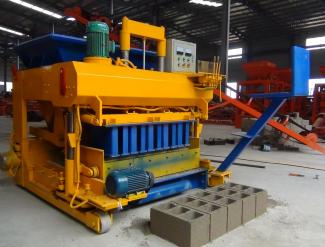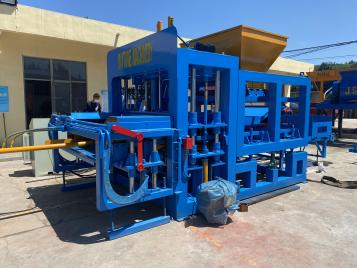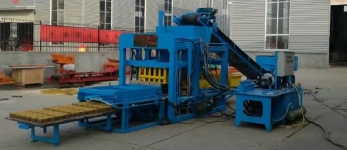- 21
- 2月
How does the block making machine ensure accuracy and consistency in block dimensions?
Block making machines are mechanical devices that are used to produce high-quality concrete blocks, paving stones, and other masonry products for construction purposes. These machines come in various forms, such as manual, semi-automatic, and fully automatic, and are equipped with different components and mechanisms to ensure accuracy and consistency in block dimensions.
The proper functioning of a block making machine relies on its ability to accurately form and mold the raw materials into standard-shaped blocks with consistent dimensions. This is crucial for the construction industry as it ensures the stability and strength of the structures being built. In this article, we will explore how block making machines ensure accuracy and consistency in block dimensions.

1. Quality Control in Production
The first and foremost factor that contributes to the accuracy and consistency of block dimensions is the quality control measures in the production process. Block making machines are manufactured according to strict industry standards and undergo rigorous testing before being put into production. This ensures that the machine is capable of producing high-quality blocks with precise dimensions.
Moreover, the raw materials used in the production of blocks, such as cement, sand, and aggregates, are also controlled and tested to meet specific standards. Any variations in these materials can lead to inconsistencies in block dimensions.
2. Precise Mixing and Compaction
The consistency of block dimensions is greatly affected by the mixing and compaction processes. Block making machines have a mixing chamber where the raw materials are thoroughly mixed, ensuring a uniform distribution of particles. The mixing speed and time are controlled to achieve the desired consistency, which is crucial in producing blocks with accurate dimensions.
After the mixing process, the raw materials are transferred to the compaction chamber, where they are compacted under high pressure to form the blocks. The pressure and duration of compaction are carefully controlled to achieve the desired density and reduce the risk of any variations in block dimensions.
3. Accurate Molding and Vibrating Systems
The molding and vibrating systems of block making machines play a crucial role in ensuring the accuracy and consistency of block dimensions. The machine’s mold is designed to produce blocks with precise dimensions, and any variations or defects in the mold can lead to inconsistencies in block sizes.
To overcome this, the molding system is equipped with mechanisms that allow for precise adjustment of the mold’s position and depth, ensuring accurate block dimensions. Furthermore, the vibrating system aids in the compaction process by removing any air pockets between the particles, resulting in stable and uniform blocks.

4. Advanced Control Systems
Modern block making machines come equipped with advanced control systems that are capable of controlling and monitoring the production process to maintain accurate and consistent block dimensions. These control systems use sensors and software to measure and adjust different parameters, such as pressure, vibration frequency, and material flow.
By constantly monitoring and adjusting these factors, the control system ensures that the machine produces blocks with the desired dimensions without any variations. Moreover, these control systems also have the capability of detecting any malfunctions or abnormalities, thereby minimizing the risk of producing defective blocks.
5. Regular Maintenance and Calibration
To ensure the accuracy and consistency of block dimensions, it is essential to regularly maintain and calibrate the block making machine. This involves regularly checking and replacing worn out or defective parts, lubricating moving components, and adjusting and calibrating the machine’s settings.
Regular maintenance and calibration not only ensure that the machine is functioning properly but also help in detecting any deviations in block dimensions and correcting them in a timely manner.

The accuracy and consistency of block dimensions depend on various factors, including the quality control measures in production, precise mixing and compaction, accurate molding and vibrating systems, advanced control systems, and regular maintenance and calibration. All of these factors work together to ensure that the block making machine produces high-quality blocks with precise dimensions, meeting the requirements of the construction industry. Thus, the use of block making machines has greatly contributed to the efficiency and accuracy of the construction process.
